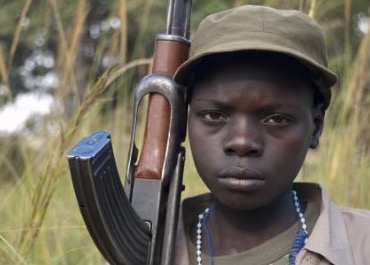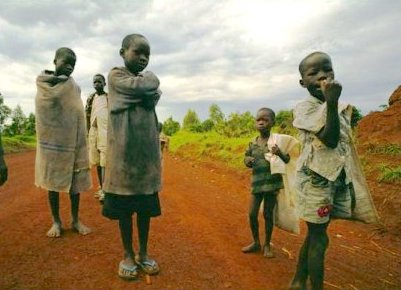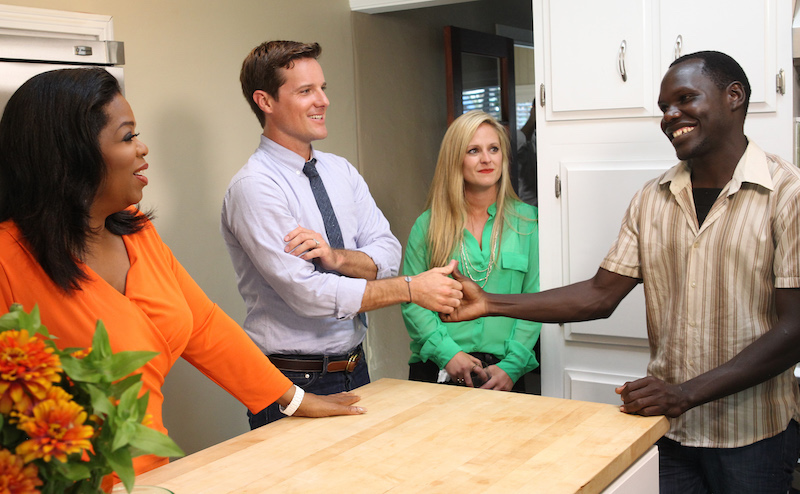Because of an interesting cultural misunderstanding, I (Lois Tverberg, chair, US Kingsway board) missed a critical detail about Kingsway Christian High School until recently.
Originally I thought that the school’s purpose was to support Rev. Dr. Milly Maturu Erema’s family. When Milly was attending Western Seminary in Holland, Michigan in 2001, four of Milly’s brothers were killed in the Lord’s Resistance Army (LRA) conflict, and Milly became responsible to educate their 22 orphaned children. Raising school fees for so many would be impossible, and Milly and her husband were both educated, so with the help of churches in our area, they decided to start a boarding school where they could receive income from other students who would attend, and make sure their children had a Christ-centered education.
Remember the Invisible Children?
What I was shocked to learn recently was that Kingsway was actually serving a much bigger purpose, and in a sacrificial way. Shortly after Kingsway began in 2008, Milly and her husband Sam were contacted by other families suffering in the LRA conflict in northern Uganda, where they both come from. They were pleading for their children to attend Kingsway too.
You may remember hearing about the “Invisible Children” who fled from their homes every night to avoid being abducted by the Lord’s Resistance Army (LRA), a rebel group that was forcing young boys to become child soldiers and girls into sexual slavery. Many walked long distances each night to sleep in cities like Gulu, where the Ugandan army was on guard. In the morning they’d return home.
There was a huge social media campaign called “Kony 2012” (see below) to call attention to the crisis, and reporters and international aid organizations flocked to Gulu to help children there. But because of the danger of the LRA, none of the visiting agencies set foot outside the city to visit surrounding villages. There, thousands more children had been sleeping in the bush every night for years, unable to attend school or church, and some had lost their families in the LRA’s massacres.
 Kingsway was in southern Uganda, which was safe from the conflict. In spite of the danger, they decided to bring desperate young people from the villages in the north to Kingsway. Of course, none could pay. Yet most of Kingsway’s first 150 students came from the conflict area. Milly and Sam made many trips to get children from their school, which was about 300 miles away.
Kingsway was in southern Uganda, which was safe from the conflict. In spite of the danger, they decided to bring desperate young people from the villages in the north to Kingsway. Of course, none could pay. Yet most of Kingsway’s first 150 students came from the conflict area. Milly and Sam made many trips to get children from their school, which was about 300 miles away.
Milly’s harrowing tales of war zone travel shocked me. Normally they traveled by bus, but the LRA would stop vehicles and set them ablaze with the people still inside. So buses stopped going to the north. Milly and Sam would take the bus as far as they could, then walk the rest of the way. They walked through the bush, often many miles, because roads were dangerous. Sometimes they were stopped by the Ugandan army, who held them at gunpoint until they explained their mission.
One time Sam was bringing four children back with him when he was captured by the Lord’s Resistance Army. When they took him back to their compound, he knew his likely fate – he would be shot and the children taken into bondage. But one of the soldiers recognized him and pled to his commander, “Oh, this man was my teacher! Please spare his life!” So they let him go. It was almost evening and he was exhausted, but he walked through the bush all night long to find safety. The children were lost to the LRA.
When “Our Children” does not mean “Our Children”
I asked Milly, were these relatives or neighbors, that you would risk your life to get them? I wondered this because Milly always spoke of bringing “our children” from the north to Kingsway. I assumed they had to be at least from her own Lugbara tribe, a minority in Uganda.

The answer was actually no! They were mostly from other tribes and villages in the north. People who were sheltering “invisible children” had contacted Kingsway. Milly reached out to each one she could help.
Many Kingsway graduates now have attended university and started jobs and found good lives, a fate unthinkable for thousands of youth who gave up hope of going to school past 7th grade because of the war. Milly even spent her own money to send one of the brightest to university, and he works for a United Nations refugee camp today.
What’s ironic is that for years I didn’t grasp the heroic, unselfish nature of Kingsway because of how Milly was using the phrase, “our children.” Local churches saw Kingsway as serving Milly’s nieces and nephews. I assumed the children from the north were extended family. But to Milly, “our children” actually referred to any desperate Ugandan child who she could help.
Social Media and Kony 2012
You may remember the social media campaign called “Kony 2012,” which was the first video to become a viral media sensation on Youtube. Produced by Invisible Children, Inc., the video told the story of the invisible children coming to Gulu, and then it attempted but failed to bring the LRA leader Joseph Kony to justice.

The campaign was promoted by influencers like Oprah Winfrey, Taylor Swift, Bill Gates, George Clooney and George W. Bush, among others. This brought enormous attention to the tragic situation going on in northern Uganda, but it wasn’t able to end the Lord’s Resistance Army conflict. Cynical reporters mocked the efforts of the campaign, calling it “white saviorism” at its utmost.
You know what? It’s actually been the humble, grass-roots ministries of Ugandans themselves, like Kingsway Christian High School, who have begun to bring hope and healing to northern Uganda.

